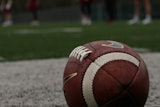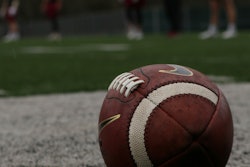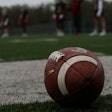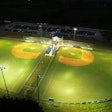It Takes Planning, Patience and a Deft Touch to Create a Multisport Complex That's Both Functional and Aesthetic

Across the country, urban sprawl is fueling frenzied construction activity in a number of upstart suburban communities - each of which is competing for new residents from among the pool of 41 million Americans who relocate each year. Inherent to the competition of attracting as many new taxpayers as possible, municipalities are offering prospective residents a complete array of conveniences, including schools, retail centers, financial institutions and medical facilities. Also among the amenities suburban migrants often put on their wish lists: outdoor recreation facilities.
College campuses competing for their share of a tuition-paying public are likewise modernizing their outdoor recreation facilities. Campus officials are finding it necessary to consider the recreation needs of an older age group - in addition to traditional 18- to 22-year-old populaces - as demographic studies suggest that a growing number of individuals in their thirties, forties and older are joining the collegiate ranks.
For municipal government and college campus officials planning to implement new recreation fields, here's some news: No longer will a few hastily arranged soccer fields or baseball diamonds meet a community's recreation needs - these days, people demand much more. Landscape architect John Edsall of Columbus, Ohio-based Edsall and Associates LLC, says the majority of his clients are looking for multisport recreation complexes, complete with sports fields and courts, walking and jogging trails, bike paths, playgrounds and water-play areas. In addition, landscape architects and designers are being asked to design and build parks that also create a sense of place - facilities that respect and accentuate the existing natural environment as much as possible.
The reason being that "open green space can be used by everybody," says Bernard Zofcin, vice president and director of architecture for Cleveland-based Brandstetter Carroll Zofcin. "There are often special-interest groups for participant sports, such as softball. But if you look at participation levels nationwide, passive recreation areas are most widely used because they're multigenerational."
According to Jose Castrejon, director of planning and landscape architecture for Cincinnati-based McGill Smith Punshon Inc., the task of creating relevant and diverse recreation spaces is far from simple. "It's really easy to do function," says Castrejon. "You clear the site, you put in fields, you seed them and you're done. That's very efficient." And kind of boring. In previous decades, communities opted for this approach to simply make sports facilities available to residents, but this 20th century solution is an outdated one for 21st century recreation participants. An alternative focus - on form, continues Castrejon, "where you come up with all these wild and crazy ideas that look great on paper, but are very out there" - isn't necessarily the most ideal, either. Typically, these projects rarely make it off the drawing board. Instead, landscape design professionals work to combine the best elements of both the mainstream and the unconventional, establishing an architectural balance between form and function.
Because the process of achieving this balance is a meticulous one, landscape design professionals advise their clients to allow plenty of time for a project's development. Too many factors - including the amount of a client's financial resources, land-acquisition capability and the desire to minimize environmental stress - play into the overall process, and each can tremendously affect the final product. Deborah Edsall of Edsall and Associates says that some communities find it difficult to maintain such patience. "One municipality contacted us in the spring and wanted soccer fields by September," says Edsall. "We told them that wasn't realistic." The municipality, in a hurry to complete the fields, chose to hire a consultant who promised to meet their deadline, but Edsall says that as of October, there were no soccer fields.
Multisport recreation complexes can be a significant investment for any community, and those that exercise patience with such projects will also likely understand the need to pursue funding sources outside the organization's standard budget. A variety of financing strategies - including grant writing, tax levy monies and capital improvement funds - can be used to generate the revenue necessary to construct such large-scale complexes. Depending on available funding, municipalities and colleges can expect multisport complexes to take anywhere from two to 15 years to complete. Thus, it is not unusual for such projects to be developed in several phases, although John Edsall says a three-year timeline is fairly standard.
Project phasing is often directly related to land-acquisition capabilities. Depending on an organization's needs, multisport parks can range from 30 to 200 acres in size. Occasionally, communities will construct complexes as large as 500 acres. A park in Elgin, Ill., boasts more than 400 acres and already includes six competition soccer fields, 10 softball fields, a 40-acre lake and a motocross track, while construction is currently under way on an 18-hole golf course. But the Elgin community was fortunate, according to Jim Enck, director of landscape architecture for Elgin-based Burnidge Cassell and Associates, because city officials were able to acquire a parcel of land that long ago had been a quarry and had gone unused for years.
"In most communities, the land is being developed so fast," says Enck. "It's hard for them to assemble large enough parcels to keep up with growth." Instead of directly competing with big-budget home builders and commercial development firms, some municipalities purchase an aggregate of smaller land parcels over an extended period of time, developing recreational areas as circumstances allow. "In one community, the city already had some land upon which there were baseball diamonds," says Enck. "They recently acquired 80 more acres. On the new land, the city plans to construct a 10-field softball complex, and whatever land remains from the two parcels will later be used for an indoor recreation center and pools."
Overlooked in the planning of nearly every outdoor recreation facility is the infrastructure. While facility owners tend to focus their attention on sports fields and their associated expenses, the complexity of infrastructure elements - irrigation, electrical, sanitation and stormwater drainage systems among them - is often underestimated. Zofcin says that designers can spend as much as 30 to 35 percent of their time on infrastructure alone. Designing these underground systems so that they operate efficiently, require little maintenance and minimize disruption to the natural environment is a key to a park's success. "If your facility is not going to be planned so that it will be well-maintained, you're wasting your money," says John Butz, a principal with New York City-based Abel Bainsson Butz. "It is very important to plan from Day One how maintenance is going to be addressed."
Because ongoing maintenance costs can potentially dwarf initial construction costs in the long run, landscape design professionals advocate doing things right the first time. "We try to talk the client into doing what is best for the site based on what the site gives us. We don't try to force the issue," says Castrejon. "Good park planning practices are more important than just building a park because you have the land."
Just as important to the design process as conducting site analyses is consulting with the potential users of the complex. And because there is no general standard by which design professionals can expect to please all park users, it's important to find out what recreational activities are essential to each municipal or college community. In some communities, soccer fields are must-have items, while in others, tennis courts or basketball courts are the priority. "It's important to get some consensus as to what the needs of the public are," says Zofcin. "You don't want to build facilities that people don't need, but you don't want to underbuild, either."
Each design firm will employ different strategies to collect input from the community. Open round-table discussions and interactive workshops are among the most common research tools; landscape design professionals will try to interview each distinct age group within the community, as well as any maintenance personnel who will service the facility. According to John Edsall, the input from younger members of the community can sometimes be surprising. "When interviewing grade school children, they're the ones telling us to preserve whatever woodlands or natural areas are left," says Edsall. "They want parks and recreational facilities that are multipurpose and have a strong family orientation. This is so the whole family can go to the park, and even if some of the kids are playing in a softball or baseball game, parents can take younger siblings to the playground area. And after the game, the whole family can have a picnic or go walking on the trails."
Castrejon says that natural areas can serve an additional purpose for communities, as well. "On one college campus, we created a wetlands so biology students can use the pond as an educational tool," says Castrejon. "At the same time, joggers view the pond as an aesthetic amenity."
In addition, Castrejon's firm was able to use the wetlands in another, more functional capacity - as a storm-water retention basin for the recreation park. "Preservation is one thing," says Castrejon. "But respecting and utilizing the natural environment to the full advantage - for preservation, recreation and education - is another."
Even the most liberal design professional will acknowledge that in order to create functional facilities, some disturbance of the environment is inevitable, as such procedures as mass grading and infrastructure installation are essential to the construction process. Perhaps it is during this step that the expertise of landscape design professionals is most evident, as their ability to blend together a site's natural elements and manufactured facilities often amazes and delights park users.
"Let's say there's a wooded site where you clear a third of the trees and use the remaining trees to hide a maintenance building," says Castrejon. "But adjacent to that building is a single-family subdivision. What you do is try to recreate a buffer zone between the building and neighborhood by replanting and utilizing similar plant materials. So in 15 to 20 years, you have another wooded area that is aesthetic but also functional." By replacing elements native to the site - including trees, plants or boulders - landscape designers can disguise any significant changes that were made to the original landscape. Similar techniques can be used near individual sports fields. "These complexes are so large, as are the individual fields within the park," says Enck, noting that a full-size soccer field requires more than 1 1 / 2 acres. "So how you do your landscaping in between will help soften the visual impact of these fields." He suggests applying such techniques as terracing and berming, if the park's topography allows.
Physical orientation and placement of sports fields demands a great deal of a design professional's attention. Often, designers will advise clients to consider the drawbacks of placing more fields within the park simply because space allows. For example, it is disadvantageous for a park to place soccer fields that face east to west, "because if you're a goalie," says Castrejon, "whether the game is at nine in the morning or six at night, somebody's looking into the sun." Park designers suggest installing north-south-oriented fields, potentially reducing user complaints and increasing field reservations.
Facility owners should also be careful not to subject fields to overuse - or use them too early. "We recommend that owners try to allow for three growing seasons before they start utilizing the fields," says Zofcin. "That provides time to establish turf, work out the bugs of drainage systems and allow for soil settlement." Although some communities might feel that 1 1 / 2 years is too long to wait to use new sports fields, Zofcin reiterates that "if you do it right, the wait is worth it."
Such fields can also provide facilities with overflow parking for special events and tournaments. If the sub-base foundation beneath certain fields is constructed to endure extra loads and provided the fields are not moist, Castrejon says that they can occasionally handle parking for extra vehicles.
From interviews with clients, design professionals often learn that they desire parking facilities that are close to recreation areas, but that are not visible from sports fields and open areas. To offer the best of both worlds, Enck says his firm will place roads and parking lots on the perimeter to reduce vehicle traffic throughout the park. As an alternative solution, Zofcin suggests creating small pockets of parking - near specific sports fields, for example - and then screening the parking areas with vegetation or berms, preventing car headlights from shining into the eyes of park users at night.
As for park lighting, design professionals find it difficult to please everyone who might be affected. There are usually three types of lighting used in a park - sports field lighting, security lighting and lighting along pedestrian walkways. Because sports field light fixtures are usually the tallest and brightest, Enck says, "you're always going to offend somebody," especially residents who live near the park. However, if park owners do some research and invest in high-tech light fixtures with deflection features, they can significantly reduce the amount of light pollution to areas outside the park's boundaries. Castrejon also suggests using timer-equipped light fixtures, where possible. "We use timer systems for tennis courts, so the lights can't be left on all night when nobody's using them," he says.
It's these details that not only create highly functional parks, but also set them apart as "signature facilities," says Butz. Although park owners would sometimes rather spend more money on sports fields than on architectural and landscaping details, he says that investing in such fine points can really improve the perception and quality of a complex. "When you design these types of facilities, athletic performance should be a priority," says Butz. "But items such as entry portals, fencing, columns and paving become signature elements that really create an attractive environment. Those elements make people feel good and proud - and can certainly impact the performance, for athletes and spectators."




































